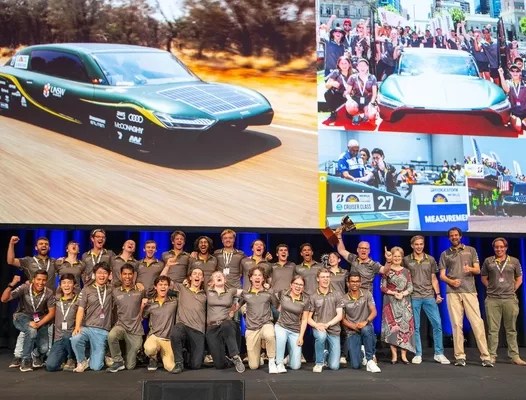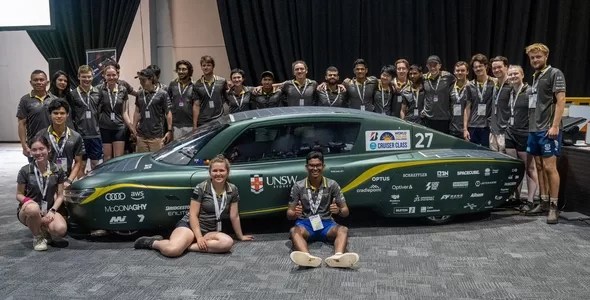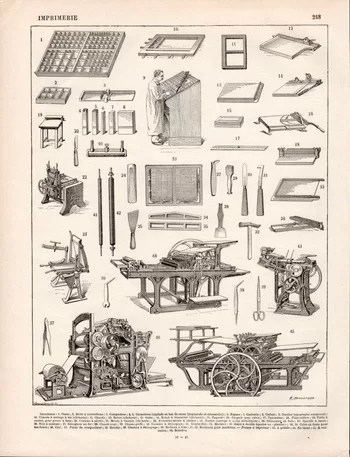The Sunswift 7, a solar-powered car designed and built by students from UNSW Sydney, emerged as the victor in the Cruiser Class of the Bridgestone World Solar Challenge. This victory came about as a result of strong winds that disrupted the entire race.
After all the calculations, Sunswift secured the top spot in the rankings, claiming the trophy. The University of Minnesota came in second place, with Team Solaride from Estonia taking third place.
Advertisement:
On day four of the 3600km race from Darwin to Adelaide, the Sunswift car was clearly leading in the points classification. However, adverse weather conditions threw the competition into chaos.
In the Cruiser Class, competitors were required to reach Coober Pedy from Alice Springs (a distance of approximately 650km) by 5 pm, but the strong winds severely impeded their progress.

The challenging conditions took a toll on the batteries of all the participating cars to the extent that none of the five remaining entrants were able to complete the stage within the allotted time.
Consequently, they were all disqualified from the remainder of the challenge.
Race organizers subsequently declared that the final results would be determined based on the standings from the previous checkpoint at Tennant Creek, where the Sunswift car had a significant lead over its competitors in the first position.
In the Cruiser Class event, rankings are not solely determined by speed but are based on a points system that considers various factors, including the car’s energy usage, the number of occupants, practicality, and the time taken to complete each stage.

Throughout the race, Sunswift maintained a substantial lead in points, even though they carried three passengers in addition to the driver and consistently outperformed the other Cruiser cars in each completed stage.
Nevertheless, the team had to await the final scrutineering session on Saturday, during which a panel of judges assessed the cars based on criteria such as design innovation, environmental impact, ease of access and egress, occupant space and comfort, ease of operation (driving and charging), versatility, style, and desirability.
Sunswift received high marks from the judges, and the team was officially announced as the Cruiser Class champions at an awards ceremony in Adelaide on Sunday evening.
This marks the first time an Australian car has won the Cruiser Class category in the World Solar Challenge since its introduction in 2015.

It’s worth noting that Sunswift 7 had already achieved a Guinness World Record by covering 1,000km on a single charge in under 12 hours in December 2022.
Sunswift Racing team principal, Professor of Practice Richard Hopkins, said:
“I could not be more proud of this team for what they have achieved.
“The work the students have done is simply amazing and I can only say positive things because they have been so focused and committed and professional.
“This is called a Challenge for a reason – and it is obviously not an easy race. When you are competing against the best in the world you have to go right to the edge of what is possible. And when you are at the very margins then something uncontrollable like the wind can play a big part.
“But overall what we achieved is a massive success. We were the fastest car in the pre-race time-trial, we were ahead on the road, we were ahead on points and we travelled further than any other team.”
Sunswift Racing team principal, Professor of Practice Richard Hopkins
Sunswift 8: Embracing Hydrogen Power
Having successfully concluded the 2023 World Solar Challenge, the dedicated team of student engineers behind the UNSW Sunswift project is now setting its sights on the development and construction of a groundbreaking car in 2024.
However, it’s important to note that this innovative creation may face regulatory challenges that prevent it from participating in the WSC.
The reason behind these potential regulatory hurdles is the ambitious inclusion of hydrogen fuel cells alongside solar panels in the Sunswift 8 design.
Preliminary plans envision a two-seater sports car that boasts the capability to complete laps at Mount Panorama, the renowned venue for the Bathurst 1000 race. Impressively, it is projected to achieve lap times only 20-30 seconds slower than the fastest V8 Supercars.
What further sets Sunswift 8 apart is its commitment to environmental sustainability. The chassis is anticipated to be constructed from materials like hemp and flax, in contrast to traditional carbon fiber, underscoring its dedication to a greener future.
“Sunswift 8 won’t just be a hybrid, it will be a tri-brid, utilising solar, batteries and hydrogen fuel cells in combination,”
“It means the car could potentially run on all three of those technologies, or just one at a time. Potentially there will be a little dial on the steering wheel to select which is being used.
“If you are just going round the corner to the shops you maybe just select solar. If the car is being used to drive to Canberra then perhaps you use battery and hydrogen. And if you are doing a lap of Bathurst then you might choose all three to give it the full beans.”
Prof. Hopkins said.
Chris Selwood AM, the race director of the Bridgestone World Solar Challenge, recognized the challenging circumstances that all the teams encountered during the stage leading to Coober Pedy.
“The teams in this event are testing cutting edge technology, often not in market and driving beyond the range of current electric vehicles”
“To win the Cruiser Class takes a combination of strategic energy management, endurance and more than a little style. These solar electric cars, designed to bring the green to the mainstream, have never been about being first across the line.”
Chris Selwood AM, the race director of the Bridgestone World Solar Challenge
Related stories
If you’d like us to continue coverage of the Formula E electric car race season, please comment below




